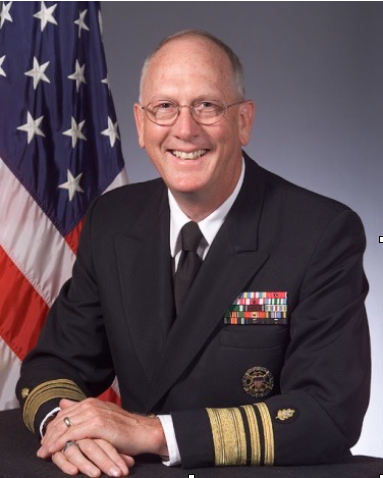
A friend of mine was recently released from the hospital following a routine surgical procedure and, after regaling me with his saga of green jello, hospital gowns open in the back and the sticker shock of his bills, asked me, “Why is the American healthcare system so expensive and complicated?” The system indeed is complicated but the answer to his question is not. American health care has been formed by four historical events, although final results of the last event are not in yet. It is still a “work in progress.” These four historical events include:
- Advances in Medical Diagnosis and Treatment Capabilities (ongoing)
- Wage Controls during WWII (1941-1945)
- Medicare and Medicaid (1965)
- The Affordable Care Act (2010)
To tell the story, we need to go back to the so-called Greatest Generation, where people in America paid their own medical expenses. That is not as far-fetched as it sounds. While going it alone today could be financially ruinous, medicine was very different in 1940. Doctors did not have the almost sci-fi armamentarium of today. Not even close. CT Scans, MRIs, most medications, joint replacement, cardiac stents, and so on did not exist. Widespread use of the new wonder drug penicillin was only beginning.
Medicine was affordable in 1940 because it could not do much. Doctors made house calls, and patients paid their own bills. We could have 1940 levels of medical costs again today, if we were willing to accept 1940’s levels of care. Very few of us would accept that deal.
The second key development was an offshoot of economic pressures during WW II. The combination of millions of American young men joining the Armed Services and the rapid ramp-up of America’s manufacturing capability resulted in strong pressure on wages, which sent salaries through the roof. In response to a perceived “wage crisis” – a threat to the war effort – the government froze workers’ wages. To compete for scarce workers, employers began adding health insurance to their employment packages. Over time the practice spread to all sectors of the U.S. economy and remains to this day the largest health care funding source in the private sector.
This system worked well but not for those retired from the work force. In a prosperous post-war economy, unacceptable numbers of elderly found themselves closed out of the health care market. No job, no affordable health insurance. In response, President Lyndon Johnson signed into law the 1965 Social Security Act Amendments, which established Medicare, a health insurance program for the elderly, and Medicaid, a health insurance program for the poor, both administered by the federal government. Both have expanded throughout the years and together provided health insurance to almost 115 million people in 2015, thus earning it the sobriquet “The Big Gorilla” of American Medicine.
Two other government systems deserve at least a mention. The Military Health System provides medical care worldwide for service members, their families and retirees while the Veterans Health Administration rounds out the government health care programs with a national network of hospitals, clinics, rehabilitation and nursing facilities. Cumulatively, these systems provide care for about 15 million people, and the VA hospital system plays a vital role in the education of young physicians.
Finally, into this morass came the Affordable Care Act (ACA), signed into law by President Barack Obama in 2010 to extend insurance coverage to some 40 million uninsured. (Those are 2010 numbers; 2015 uninsured numbers are about 29 million). ACA is actually two separate pieces of legislation: the Patient Protection and Affordable Care Act and the Health Care and Education Reconciliation Act of 2010. Together, according to Medicaid.gov, they “expand Medicaid coverage to millions of low-income Americans and make numerous improvements to both Medicaid and the Children’s Health Insurance Program (CHIP).”
ACA is not universal coverage. Americans may choose to pay the tax penalty rather than purchase insurance. Still others may receive an exemption from the requirement to have coverage. For instance, those who make too little to file a tax return or who cannot find affordable coverage – less than 8 percent of their household income – can be exempt. Plus there are “hardship” exemptions for things like bankruptcy, unpaid medical bills, death in the family and those eligible for Medicaid but their state chose not to expand the program under the law.
However, according to the Congressional Budget Office (CBO), even if all states expanded Medicaid, 8 percent of Americans would still be uninsured. For everyone to be covered, new universal coverage legislation would have to be passed by Congress. Bottom line, even with all these improvements in health care coverage, the United States is still one of just a handful of advanced nations that does not make sure its citizens have basic health care. As an example, all member countries of the Organisation for Economic Co-operation and Development (OECD) have universal (or quasi-universal) health coverage for a core set of health services and goods, except Mexico and the United States.
It is difficult to predict where the next “big thing” may come from. Republicans in Congress oppose “Obamacare” but have been unable to muster the votes to repeal it. Many would prefer to see a government-sponsored health care system like those in most of Europe and Canada. Others argue that our unique American business model results in better overall care albeit at greater expense than state-run systems.
American Medicine can and should do a better job, either as a single payer system or something more like today’s public-private system. I can make an intellectual argument for both cases. But my preference as a physician would be a single payer system because it frees the provider from being a “businessman.” My career was spent as a Naval Medical Officer where I had the privilege to care for those Americans who chose to protect the rest of us by wearing the cloth of our Nation. And I never had to ask one of them “Do you have insurance?” nor worry that my treatments might bankrupt a family (“How sick can you afford to be?”). My only responsibility was to be the best doctor providing the best care I could give.
Only time will tell what the American health system of tomorrow will look like. But the political emotions on both sides of the question run high, so we do know the journey will be interesting.

